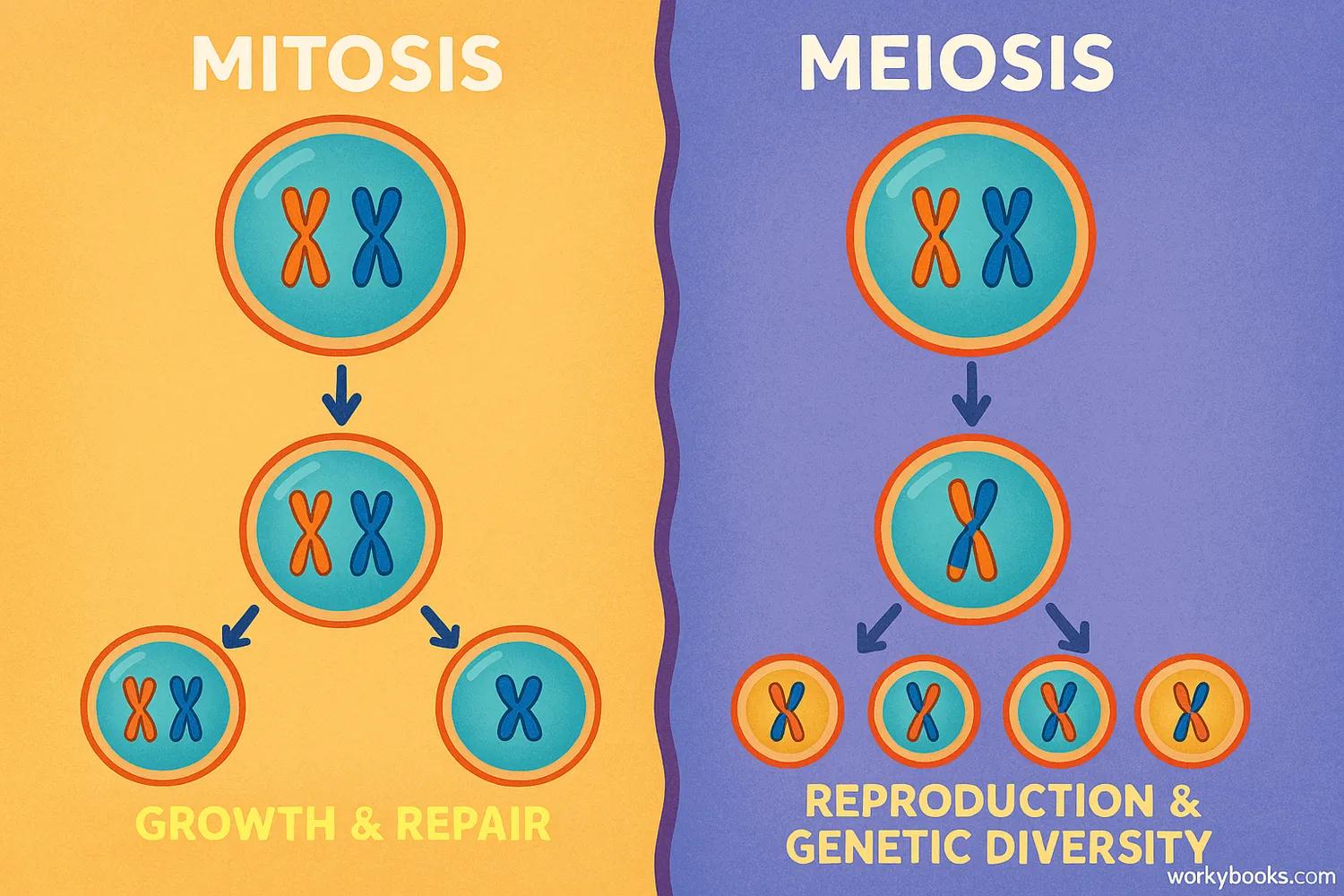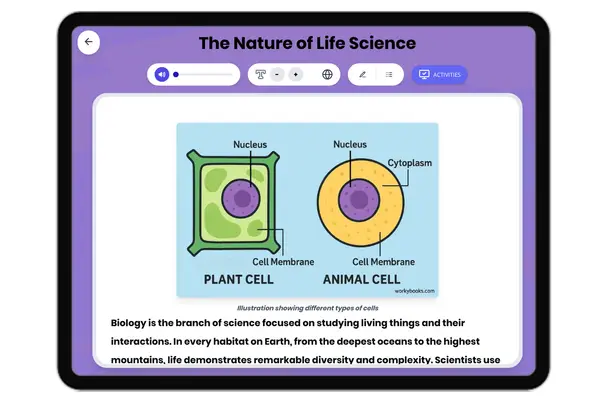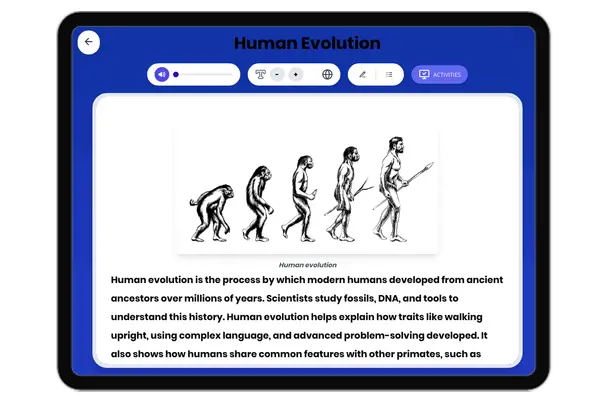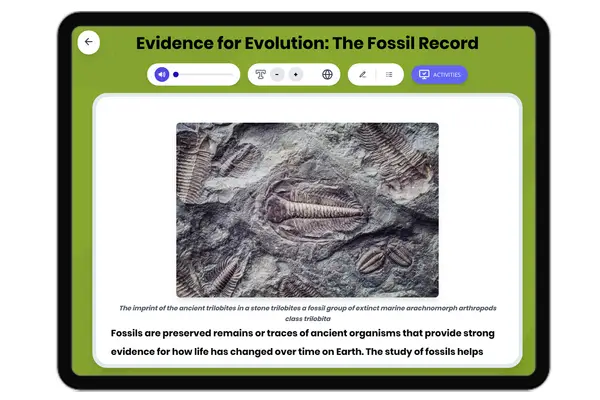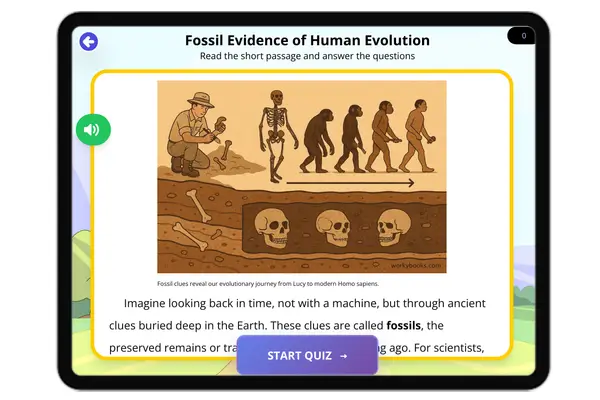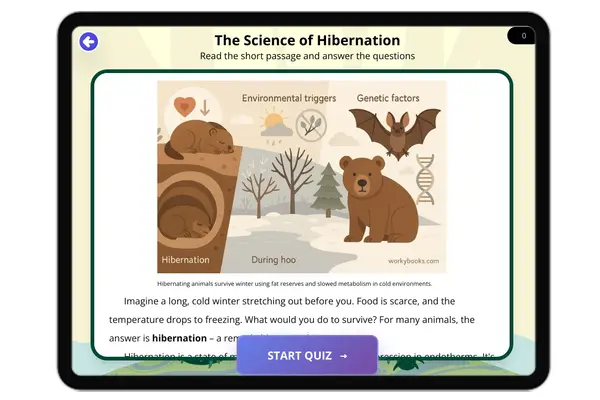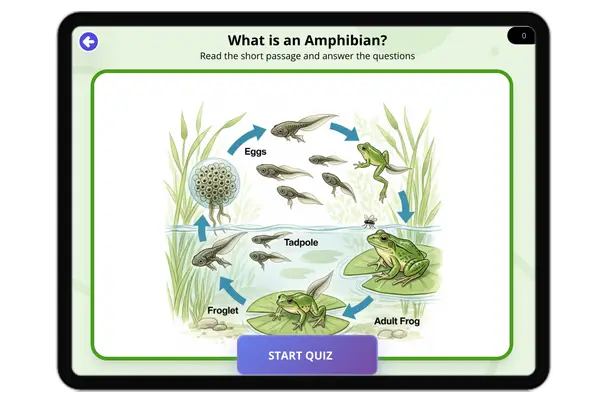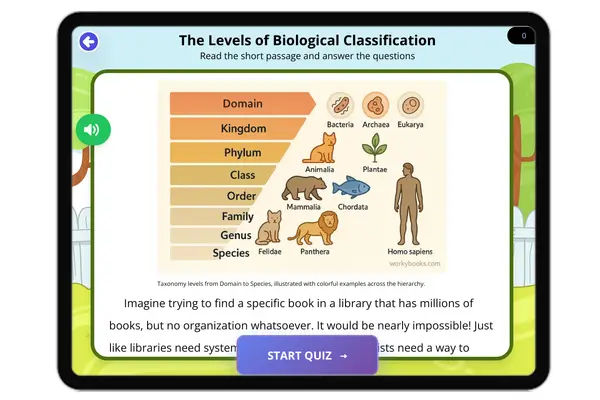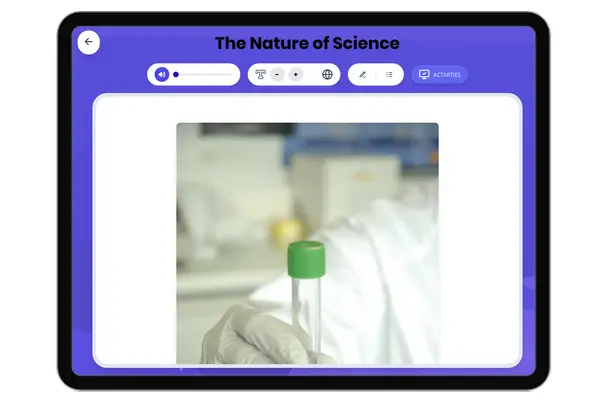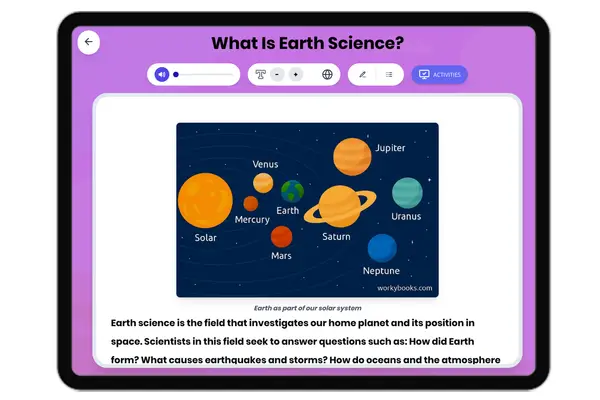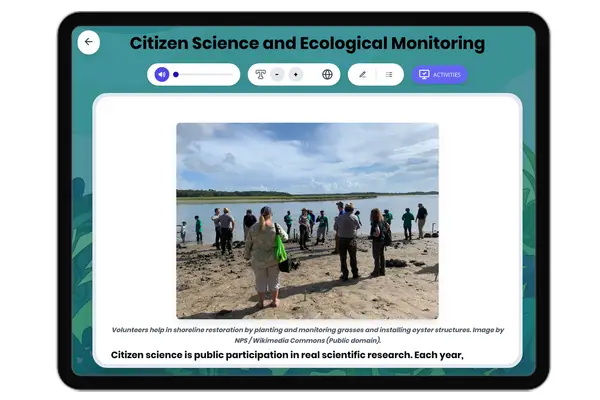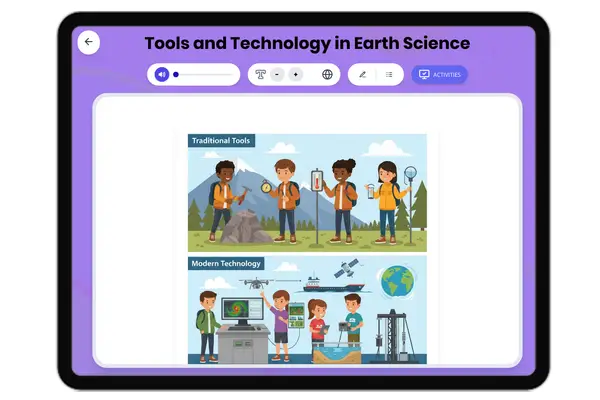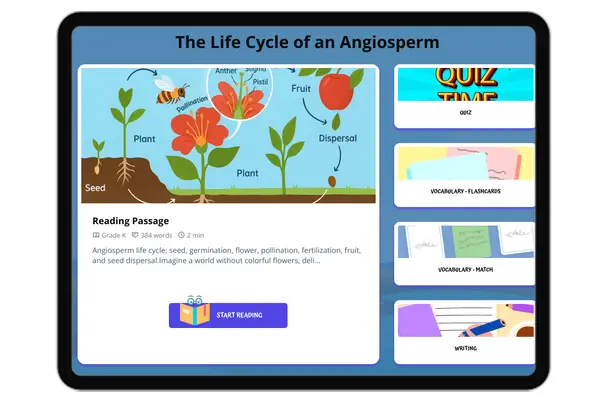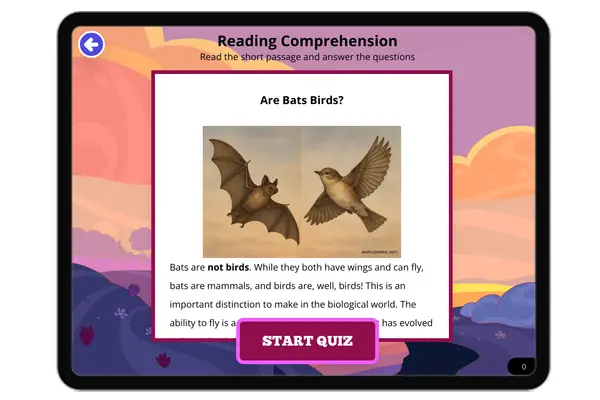What is the difference between mitosis and meiosis? — Reading Comprehension
Premium Resource
Grades
- 3
- 4
- 5
- 6
PRINT+DIGITAL RESOURCE
This learning resource is available in interactive and printable formats. The interactive worksheet can be played online and assigned to students. The Printable PDF version can be downloaded and printed for completion by hand.
About This Reader
"This learning module provides a comprehensive reading passage on the two primary types of cell division: mitosis and meiosis. Designed for a middle school audience (grades 6-8), the passage uses clear, direct language to explain the purpose, process, and outcomes of each type. It emphasizes key vocabulary such as 'mitosis,' 'meiosis,' 'diploid,' 'haploid,' and 'crossing over' while connecting these concepts to real-world examples like growth, tissue repair, and sexual reproduction. The content aligns with NGSS standards related to heredity and reproduction (e.g., MS-LS3-2) and is structured for self-study. Following the passage are eight multiple-choice questions designed to assess various levels of understanding, from basic recall to application of concepts in new scenarios."
Perfect For:
👩🏫 Teachers
- • Reading comprehension practice
- • Auto-graded assessments
- • Literacy skill development
👨👩👧👦 Parents
- • Reading practice at home
- • Comprehension improvement
- • Educational reading time
🏠 Homeschoolers
- • Reading curriculum support
- • Independent reading practice
- • Progress monitoring
Reading Features:
📖
Reading Passage
Engaging fiction or nonfiction text
❓
Comprehension Quiz
Auto-graded questions
📊
Instant Feedback
Immediate results and scoring
📄
Printable Version
Download for offline reading
🔊
Read Aloud
Voice-over with word highlighting



